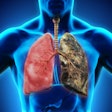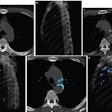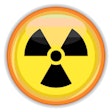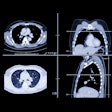Dear CT Insider,
In the past decade, numerous groups have investigated and debated the potential harms and benefits of CT lung cancer screening. The majority of trials on which these discussions have been based offered two or three rounds of annual exams. But how might prolonged screening affect lung cancer diagnosis and long-term patient outcomes?
Researchers from Italy set out to explore precisely that question in the Multicentric Italian Lung Detection trial. Their 10-year results, comparing the effect of annual or biennial CT lung screening versus no screening in thousands of high-risk smokers, serve as the centerpiece of this edition's Insider Exclusive.
While ample dialogue about CT lung screening takes place among clinicians, this does not appear to be the case when it comes to physician-patient consultations. Researchers from Dartmouth College uncovered that less than 20% of patients who met the eligibility requirements of the U.S. Preventive Services Task Force discussed screening with a physician in 2017.
In addition, multiple studies have discovered significant disparities in access to CT lung screening:
- A group from South Carolina reported the prevalence of a disproportionate number of screening centers in cities compared with rural areas, where a greater need for the exam exists.
- A different team of investigators out of Michigan revealed that sexual minorities were twice as likely as heterosexuals to be eligible for a screening exam but not receive one.
Nevertheless, U.S. cancer societies continue to expand their efforts to improve the availability of CT lung screening, with more than 70% of cancer centers offering onsite access to the test.
Colorectal cancer is yet another disease that clinicians may get ahead of with improved screening initiatives. Researchers from Stanford University projected that lowering the starting age for colon cancer screening from 50 to 45 could reduce cancer deaths while also lowering overall costs. Radiologists may be able to take advantage of this policy change to counter the gradually dwindling usage rates of CT colonography colon cancer screening, according to researchers from Massachusetts General Hospital.
Radiologists are also faced with an opportunity to increase their role in CT coronary artery calcium testing for heart disease, particularly for individuals with high levels of calcium. Physicians from the Johns Hopkins School of Medicine found that adults with a score exceeding 1,000 Agatston units had a much greater risk of all-cause mortality than those with lower scores.
Finally, researchers from the U.S. and Australia found that most patients view CT exams in a positive light, which bodes well for the future of the imaging modality in healthcare.
This coverage represents just a selection of news and stories available in the CT Community. Head over to AuntMinnie.com to stay abreast of ongoing developments in the field.



















